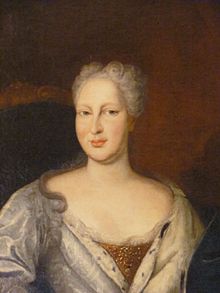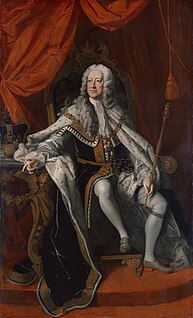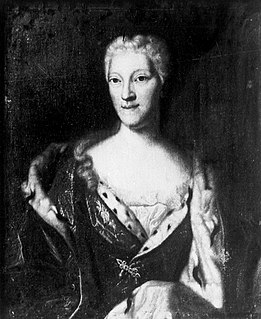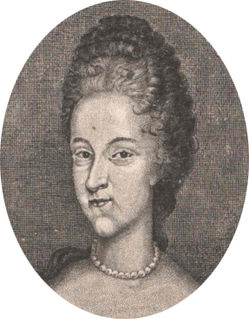| Dorothea Friederike of Brandenburg-Ansbach | |
|---|---|
| Countess of Hanau-Münzenberg Countess of Hanau-Lichtenberg | |
 | |
| Born | 12 August 1676 Ansbach |
| Died | 13 March 1731 (aged 54) Hanau |
| Burial | 17 or 25 March 1731 St. John's Church, Hanau (currently known as Old St. John's Church) |
| Spouse | Johann Reinhard III of Hanau-Lichtenberg |
| Issue | Countess Charlotte of Hanau-Lichtenberg |
| House | Hohenzollern |
| Father | John Frederick of Brandenburg-Ansbach |
| Mother | Johanna Elisabeth of Baden-Durlach |
Dorothea Friederike of Brandenburg-Ansbach (12 August 1676 [1] – 13 March 1731) was the daughter of Margrave John Frederick of Brandenburg-Ansbach (1654–1686) and his first wife, Margravine Johanna Elisabeth of Baden-Durlach (1651–1680). She was a half-sister of Queen Caroline of Great Britain, the wife of King George II

John Frederick, Margrave of Brandenburg-Ansbach succeeded his father Albert II as margrave of Ansbach in 1667. He married his second wife Princess Eleonore Erdmuthe of Saxe-Eisenach on 4 November 1681. Their daughter Wilhelmine Charlotte Caroline, Margravine of Brandenburg-Ansbach married George II of Great Britain before he became king.

George II was King of Great Britain and Ireland, Duke of Brunswick-Lüneburg (Hanover) and a prince-elector of the Holy Roman Empire from 11 June 1727 (O.S.) until his death in 1760.

On 20 (or 30) August 1699, Dorothea Friederike Count married Johann Reinhard III of Hanau-Lichtenberg. [2] She was the last Countess of Hanau. The marriage produced one daughter: Charlotte Christine Magdalene Johanna (1700–1726). Charlotte was the sole heiress of the county of Hanau and married on 5 April 1717 Crown Prince Louis VIII of Hesse-Darmstadt (1691–1768).

The County of Hanau was a territory within the Holy Roman Empire, evolved out of the Lordship of Hanau in 1429. From 1456 to 1642 and from 1685 to 1712 it was divided into the County of Hanau-Münzenberg and the County of Hanau-Lichtenberg. After both lines became extinct the County of Hanau-Münzenberg was inherited by the Landgraviate of Hesse-Kassel, the County of Hanau-Lichtenberg by the Landgraviate of Hesse-Darmstadt in 1736.

Louis VIII was the Landgrave of Hesse-Darmstadt from 1739 to 1768. He was the son of Ernest Louis, Landgrave of Hesse-Darmstadt and Margravine Dorothea Charlotte of Brandenburg-Ansbach.
Friederike Dorothea died on 13 March 1731 and was buried on 17 or 25 March 1731 [3] in the family vault of the Hanau counts in the St. John's Church (Hanau) (currently known as Old St. John's Church) in Hanau. [4] The tomb was largely destroyed in the bombing of the Second World War.










